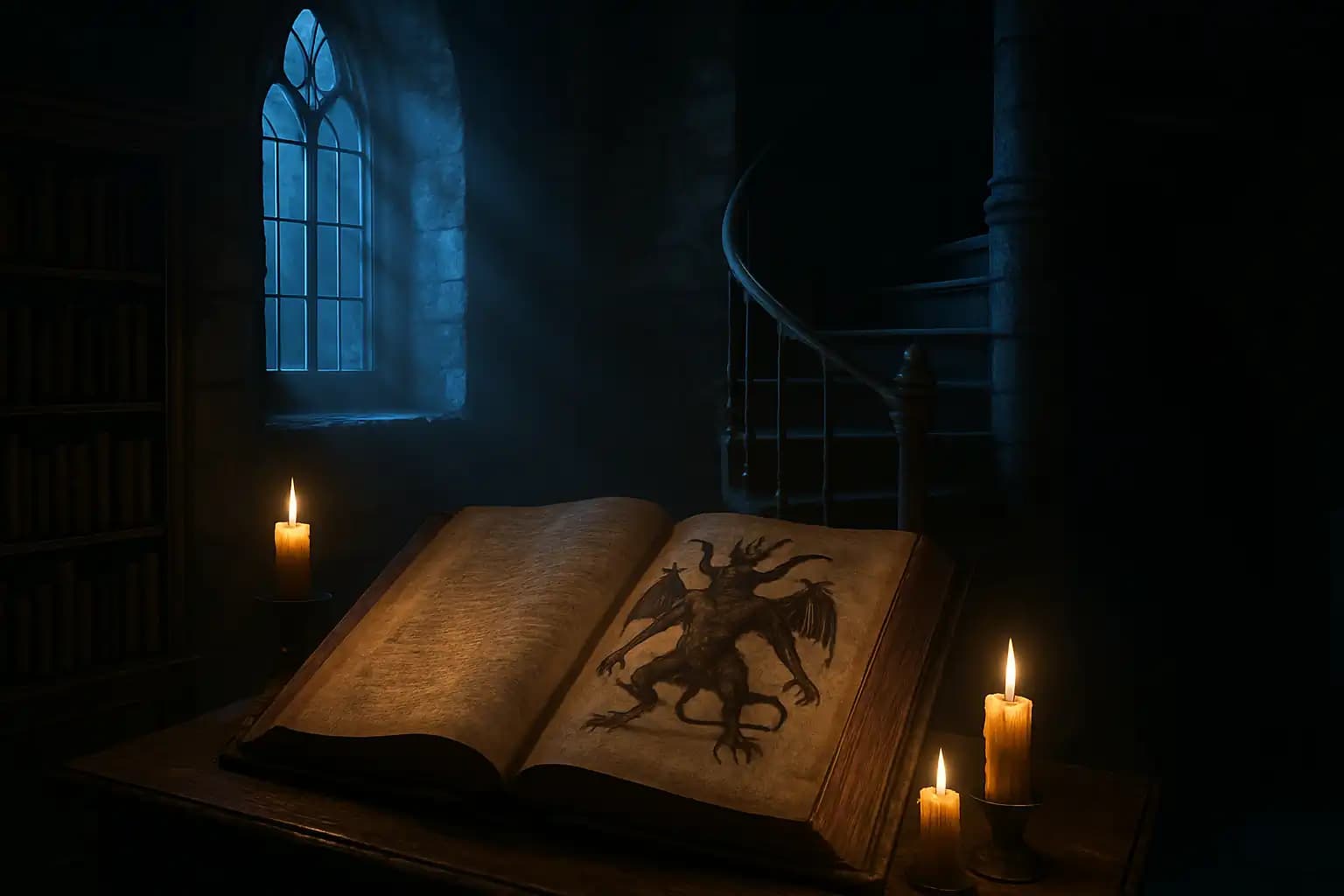Whispers about the Codex Gigas, or the Devil’s Bible, spread through medieval Europe like wildfire. This extraordinary 13th-century tome from the Benedictine monastery of Podlažice in Bohemia measures nearly a meter tall and weighs over 165 pounds. Its physical might captivates, but the book’s infamous full-page portrait of Satan, facing a vision of Heaven, truly fuels imagination and superstition (History.com; Codex Gigas).
Devil’s Bible: Origins, Legends, and Medieval Fear
According to persistent legend, the Codex Gigas was created in a single night by a condemned monk, Herman the Recluse. He allegedly made a pact with the Devil to avoid being walled up alive for breaking his vows. This origin myth serves as a medieval remix of older cautionary tales, like that of Theophilus the Penitent. Scholars now recognize that the manuscript, written in Latin, includes not just a full Vulgate Bible but also historical chronicles, medical texts, and magical formulas. Its sheer scale and consistency indicate years of meticulous work rather than a single Faustian overnight effort (HeritageDaily). Still, with some pages missing, rumors of satanic prayers, and a tumultuous journey through war and fire, it’s no wonder the Codex inspires ongoing debates similar to those in revisionist history analysis and cover-up investigations.
The Nazi ‘Hole to Hell’: From Urban Legend to Cold War Folklore
The alleged Nazi “Hole to Hell,” often dubbed “Nazi Hell Holes,” persists as an urban legend. It involves deep drilling, arcane technology, or occult practices in Europe or Soviet-era Siberia. No credible documentation links these tales to Nazi activities, but they echo anxieties about forbidden science and hidden evil. Recent adaptations, like this episode by Discovery, entwine the legend in broader Cold War mythmaking about lost Nazi tech and supernatural plots. Ultimately, it reflects our modern appetite for black-site mysteries—similar themes arise in speculative narratives about AI runaway scenarios and archival inquiries like hybrid warfare case studies.
Satanic Panic: Hoaxes, Moral Outrage, and Nazi Occult Fantasies
The late 20th-century “Satanic Panic,” a moral panic in the 1980s and 90s, echoed old Nazi occult rumors. High-profile accusations of Satanic ritual abuse, particularly in the U.S., often referenced Nazi Germany and shadowy government conspiracies, despite a lack of credible evidence. The Satanic panic left a cultural legacy that resonates today, evident in modern conspiracy investigations and explorations into manipulated realities, including simulation hypothesis analyses.
Mythmaking Matters: Why These Stories Persist
What connects the Devil’s Bible, Nazi “Holes to Hell,” and modern panic is not just their gothic allure. These legends crystallize profound social anxieties, embodying fears of invisible forces—divine, technological, or governmental. When literature or war propaganda mutates into shared folklore, it reinforces real events, media distortions, and unanswered mysteries. This creates a shadow history that shapes our collective psychology, paralleling psychological impacts discussed in high-stakes conflict analysis and exploring the arcane aspects of science like comet event reports.
The allure of “devil’s books” and “holes to hell” demonstrates our enduring fascination with the forbidden and unknown. To explore society’s intrigue with the dark and mysterious further, follow developments and broader context at Unexplained.co.





